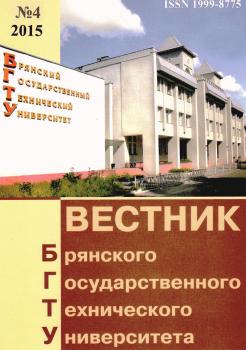employee
Bryansk, Bryansk, Russian Federation
National Research Nuclear University “MEPhI” (Professor)
Bauman Moscow State Technical University (Professor)
Bryansk, Bryansk, Russian Federation
To ensure wear resistance of all tribo-couplings of a bearing assembly at the expense of the abrasive wear decrease it is necessary the solution of problems connected with the impermeability of their movable joints. In this case by the impermeability we imply a process of sealed “wall” formation which is able to separate reliably volumes with different environments at considerable changes of external factors of environment: temperature, dustiness, aggressiveness and others. The contact of two hard surfaces of tribo-coupling of the “shaft-seal” type forms a system of cavities, capillaries of an arbitrary shape and contact patches. Under the action of pressure difference on separate capillaries arise leaks. The depressurization of bearing friction assemblies (leak moment) results in the decrease of wear rate of tribo-coupling of “shaf-tseal” type, but a wear rate of other tribocouplings such as “ringsolid of rolling motion”, for frictionless bearings or “shaft-bushing” for friction bearings increases because of abrasive penetration into a contact area. The penetration of quartz particles (pollutions) through a sealing into a bearing assembly results in the increase of a constant of friction and initiation of abrasive wear in tribocouplings of “ringsolid of rolling motion” and “shaftbushing” types. The wear rate of “ringsolid of rolling motion” and “shaftbushing” couplings depends on the abrasive concentration in lubricant and a leak at the outlet from the bearing assembly. For the wear resistance increase in tribo-couplings of bearing assemblies it is necessary not only to increase the hardness of contact surfaces, ensure optimum roughness, select materials in tribo-couplings, but also to ensure the impermeability and lubricant keeping in a friction area.
lubricant, wear resistance, wear rate, abrasion, tribo-coupling, impermeability, friction assembly
1. Kondakov, L.А. Seals and Sealing Systems: Reference Book / L.А. Kondakov, А.I. Golubev, V.V. Gordeyev [et al.]; under the general editorship of А.I. Golubev, L.А. Kondakov. - 2-d Edition, revised and supplemented - М.: Mechanical Engineering, 1994. - pp. 448.
2. Shets, S.P. Sealing property increase in cups by combining with magnetic fluid seal/ S.P. Shets// Bulletin of Bryansk State Technical University. - 2007. - №2(14). - pp. 27-31.
3. Shets, S.P. Cup wear rate in tribo-coupling of “shaft-seal” type / S.P. Shets // Bulletin of Bryansk State Technical University. - 2009. - №2(22). - pp. 9-12.














